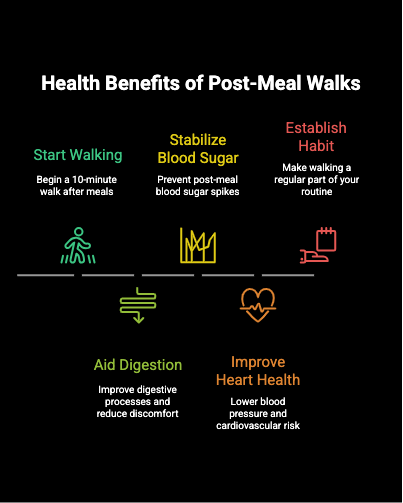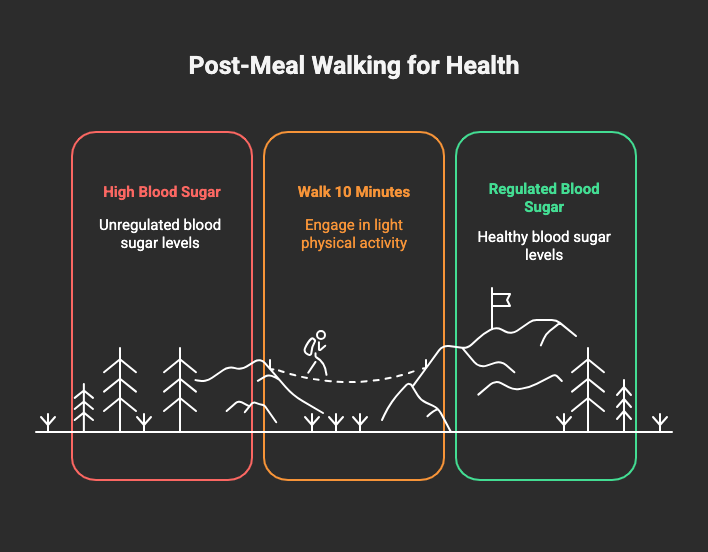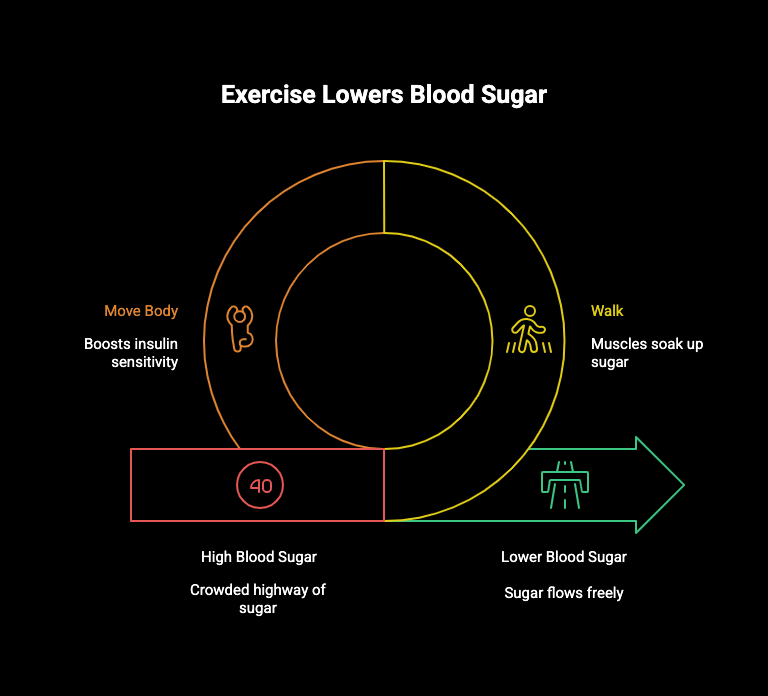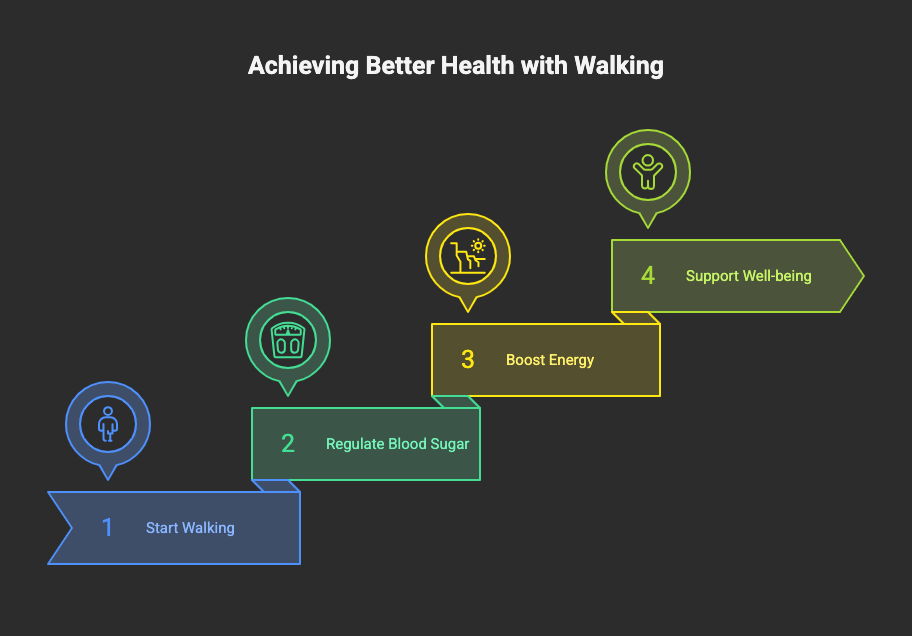
Key Highlights
- A 10-minute walk after meals offers significant health benefits, making it a great starting point for a healthier lifestyle.
- This simple physical activity aids your digestion and can help reduce uncomfortable symptoms like gas and bloating.
- Walking after you eat is an effective way to stabilize blood sugar levels and prevent post-meal spikes.
- Regular post-meal strolls contribute to better heart health by helping to lower blood pressure and cardiovascular risk.
- Starting this healthy habit is easy, as even a two-to-five-minute walk can make a positive difference.

Introduction
Are you looking for simple yet powerful healthy habits to improve your well-being? The answer might be as easy as taking a short walk after you eat. This small addition to your routine requires no special equipment and can have a big impact on your health. Incorporating physical activity like a post-meal stroll can support your digestion and help manage your blood sugar levels. It’s an accessible and effective way to begin a journey toward a healthier you, one step at a time.
Key Health Benefits of a 10-Minute Walk After Meals
The health benefits of walking are well-documented, but a short period of physical activity right after a meal offers its own unique advantages. Taking just 10 minutes to move your body can kickstart positive changes, from your digestive system to your heart.
One of the most immediate benefits of walking is its ability to help regulate your blood sugar. This simple habit can be a powerful tool in your overall wellness kit. Let’s explore how this practice supports your digestion and helps keep your blood sugar in a healthy range.

Busting the Myths: Exercise and Diabetes
It’s easy to fall for common myths about diabetes and exercise. Maybe you’ve heard that working out doesn’t matter if you already have diabetes, or that only intense, sweat-dripping workouts can make a difference. Some people even believe that walking is too gentle to have any real impact, or that physical activity won’t affect blood sugar at all.
But these beliefs couldn’t be further from the truth.
The Science: How Movement Transforms Your Blood Sugar
The reality is, exercise is one of the most powerful tools for managing blood sugar. When you move your body—even with something as simple as a walk—your muscles act like sponges, soaking up sugar from your bloodstream. This process boosts your insulin sensitivity and can lower your glucose levels almost immediately.
Imagine your bloodstream as a crowded highway. Exercise is like opening up extra exits, allowing traffic (sugar) to flow freely and preventing dangerous jams. Even a short walk can help your body process sugar more efficiently, making a real difference in your health.

Small Steps, Big Impact: Why Walking Works
You don’t need to become a marathon runner or spend hours at the gym to see results. Research shows that moderate activities like walking or cycling can dramatically improve blood sugar control. The best part? You can start with just 10 minutes.
Try this: after each meal, lace up your shoes and take a brisk 10-minute walk. This simple habit can help regulate your blood sugar, boost your energy, and support your overall well-being.

Your Action Plan: Start Today
Don’t wait for the “perfect” time to begin. Start today—after your next meal, step outside and walk for 10 minutes. Notice how you feel, and celebrate each small victory. Over time, these short walks can add up to big changes in your health.
Remember, every step counts. Your journey to better health starts with a single walk.
Thank you for reading! For more practical tips and inspiration, be sure to watch the full video.
Frequently Asked Questions
Are there any risks to walking immediately after eating?
For most people, a gentle walk is perfectly safe. However, some may experience an upset stomach, nausea, or cramping if they start too soon. If this happens, try waiting 10–15 minutes after your meal before starting your walk. Always listen to your body and consult a healthcare provider if you have concerns.
How soon will I notice the effects of this habit?
You may notice some health benefits, such as better energy levels and more stable blood sugar, almost immediately. Other long-term advantages, like improved heart health, develop with consistent regular exercise. The key is to make it a lasting part of your routine to reap all the rewards.
Does it matter if I walk after breakfast, lunch, or dinner?
Walking after any meal is beneficial. However, it can be particularly helpful after your largest meal of the day to help prevent significant blood sugar spikes. For the greatest overall benefit, aim for consistency by taking a short walk after breakfast, lunch, and dinner whenever possible.


